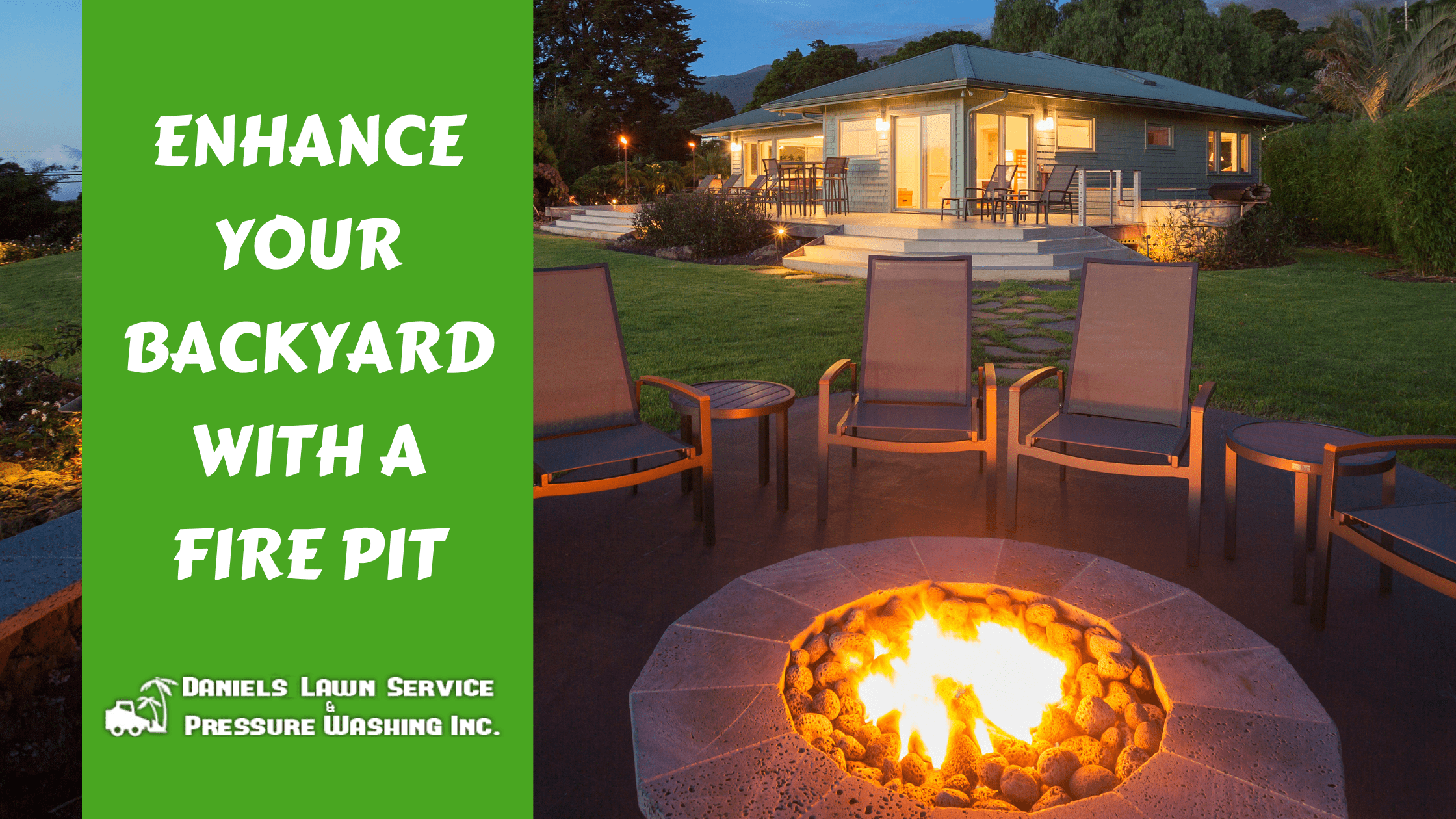
Cooler temperatures are here to stay for a while in Central Florida! Why not make the most of the little bit of “winter” we experience every year in your own backyard? A fire pit is an excellent addition to any backyard seating arrangement — perfect for s’mores, warm conversation with your family or simply relaxing. Just as we covered in our blog post, “How to Add a Pond to Your Landscaping,” we’re covering everything you need from fire pit ideas, budget and landscaping considerations, to important safety practices.
Keep reading to learn more!
A Fire Pit for Every Yard and Budget
Fire pits come in a variety of sizes, styles, materials and price ranges. While it may seem overwhelming to choose from so many varieties, the good news is that it’s likely the perfect fire pit exists somewhere out there just for you! Common fire pit materials include steel, stainless steel, copper, cast iron, aluminum, glass and polyresin. Some can cost more than others, but backyard budget decor hunters can rejoice that affordable fire pits do come in many different materials and styles. Many great fire pits cost less than $300!
Here’s the rundown of each common fire pit construction material:
- Steel — Steel fire pits come in a wide variety of designs as well as color stain choices. However, be sure to choose powder-coated steel in order to avoid rust.
- Stainless Steel — The upscaled cousin to regular steel, stainless steel fire pits include the added benefit of being rust-free as well as resistant to heat and the elements. They are a lightweight but durable option.
- Cast Iron — A budget-hunter with an eye for upscaled-looking designs will love cast iron fire pits due to their cost-efficient price tag. They are quite sturdy but not too heavy to move, resistant to rust, and great conductors of heat. Bucket and bowl designs are the most common.
- Copper — Often in bowl shape, copper fire pits have a distinct classic-looking color with a higher price tag to match. They do not rust, but will need special cleaning over time.
- Aluminum — Aluminum fire pits are perfect for any budget backyard decor. Not only are they extremely durable and can remain in great condition for years, but also are very lightweight.
- Polyresin — They might look like stone, but polyresin fire pits are only designed to look that way. Polyresin is a great choice for anyone wanting a more natural and rustic outdoor decor theme. These fire pits are also sturdy, easy to maintain and lightweight.
- Glass — Glass fire pits give a sleek ambiance due to the glass pebbles made of highly tempered glass that has been melted, cooled and smoothed out. There are many color varieties available, and they are able to withstand high temps without distortion.
Fuel type is also an important deciding factor when choosing your fire pit and should be added to your consideration of budget and safety. The most common fire pit fuel types include wood, propane, charcoal, natural gas, bio-ethanol and gel. It’s important to note that propane and natural gas are the more costly fuel options up-front due to propane fire pits requiring the purchase of propane tanks and natural gas fire pits requiring professional installation to connect to your home’s natural gas line.
Portable or Built-In? Which Is Better for Your Yard?
Buying a fire pit comes with even more options besides just material and fuel. If you’re a renter, you sadly won’t have much of an option between a portable or built-in fire pit. Homeowners, however, do have the luxury of deciding whether or not to install a permanent fire pit or opt for portability. The choice comes down to preference, cost and what your home/backyard can safely support. Built-in fire pits generally cost more to install and are permanent in their location, but can be a great asset to your outdoor landscaping and decor. Portable fire pits can easily be moved, and they can be more cost-efficient.
Other limitations of your choice to consider are fire codes and local ordinances, which you should always check first before purchasing and using a home fire pit. If you have a wooden deck, a small yard, a large overhang, or don’t have a stone/concrete space to place your firepit, then you’ll want to opt for a portable fire pit instead.
All of this leads us to our next point …
How to Enjoy Your Fire Pit Safely
The Home Depot offers these four important fire pit safety tips:
- Always place your fire pit at least 10 feet away from any structure (home, garage, vehicle, etc.) or combustible surface.
- Always keep a bucket of water and/or a fire extinguisher nearby.
- Only use real wood, not pressure-treated wood, for wood-burning fire pits.
- Frequently check on any burn bans or restrictions for your region.
Additionally for wood-burning fire pits, you’ll need to be fully informed about your local wood-burning laws. Places to check for this information will be your HOA rules as well as city and/or county laws. Burn Wise from the U.S. Environmental Protection Agency (EPA) is an excellent educational fire safety online resource.
Finally, never use a fire pit indoors. This is extremely dangerous and can lead to a house fire. Fire pits are designed for outside use only — and even then, only in the proper, safe spaces outside.
Call the Professionals!
While we don’t offer fire pit installations, Daniel’s Lawn Service & Pressure Washing does offer years of experience treating Central Florida lawns and providing landscape design. We’re the experts when it comes to lawn safety, which includes fire pits! We hope we’ve given you some great fire pit ideas and safety tips today. If you’re looking to add a fire pit to your backyard landscape this winter, give us a call for our professional recommendations and landscape design services!


